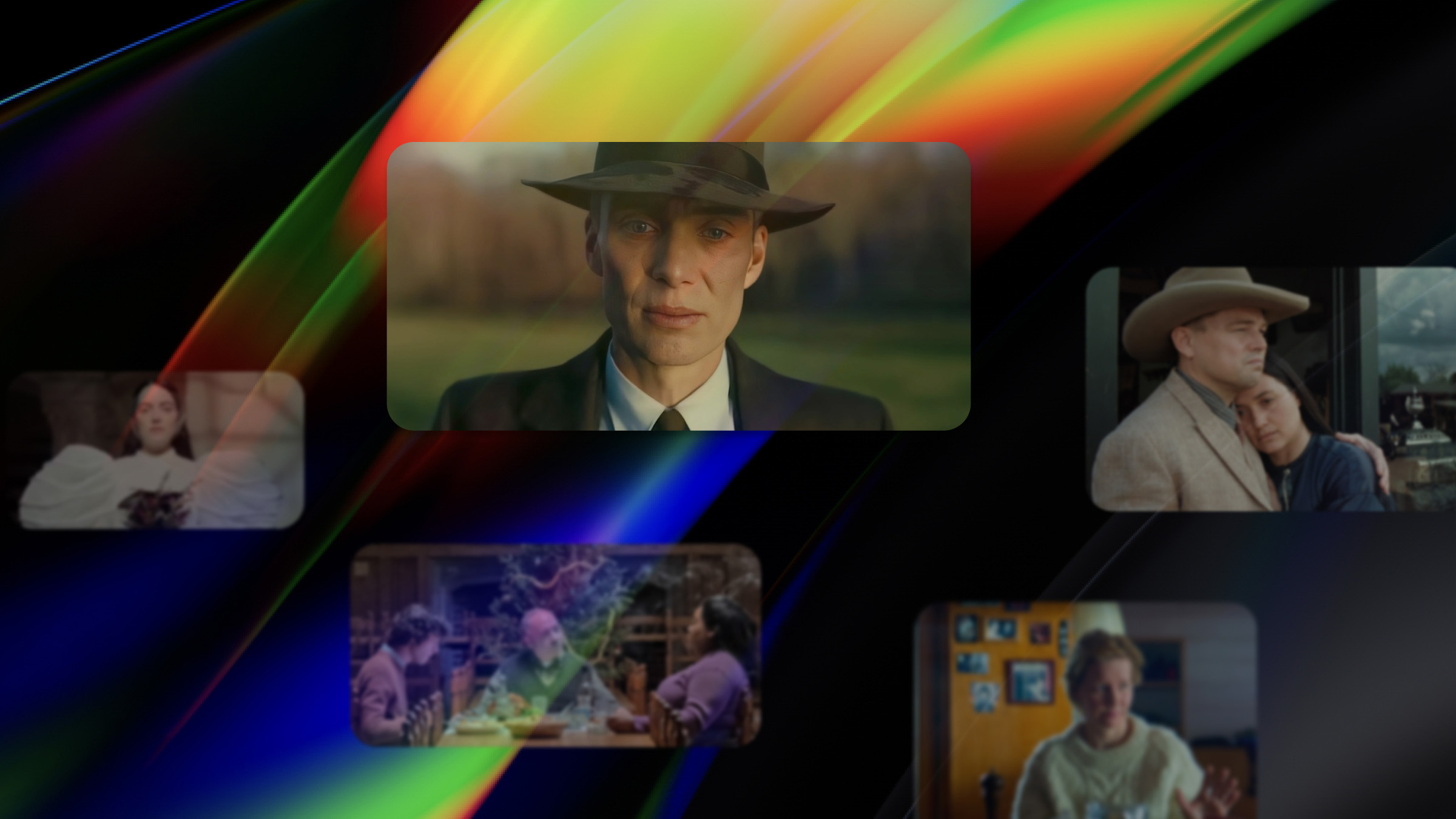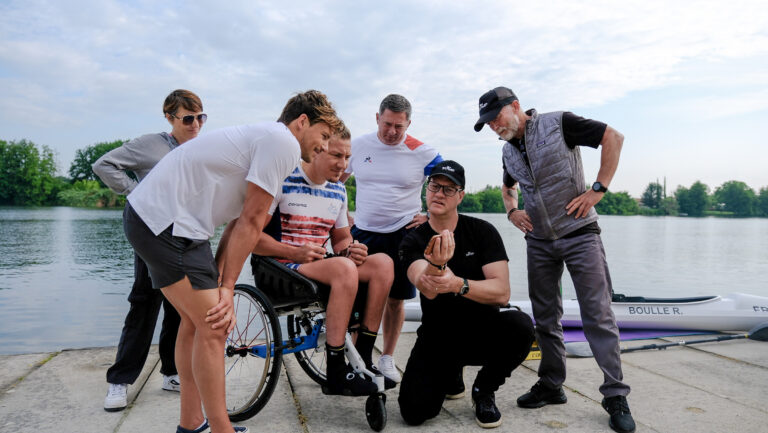How lucky are we to have had Matt Feury (host of The Rough Cut) join us in 2023 so he could interview all of the Best Editing nominees and share them with us—and with you. From them, we’ve created a kind of editors “roundtable” in which we’ve pulled answers from the various editors talking about different topics and organized them so you can compare and contrast their approaches.
Obviously, you can read the full interviews with the teams because there’s lots more to mine. Either way, you get the benefit of hearing from the best of the best!
Contents
And the nominees are
Laurent Sénéchal, Anatomy of a Fall
Kevin Tent, ACE, The Holdovers (interviewed with director Alexander Payne)
Thelma Schoonmaker, ACE, Killers of the Flower Moon
Jennifer Lame, ACE, Oppenheimer (interviewed with Mike Fay, Nick Ellsberg, and Tom Foligno)
Yorgos Mavropsaridis, ACE, Poor Things
But wait…there’s more…
We also have Hilda Rasula, ACE for American Fiction; Nick Houy, ACE for Barbie; and Michelle Tesoro, ACE for Maestro. Although not specifically nominated for Best Editing, they worked on Best Picture nominees—so why would we not include their insights?
Adapted screenplays
This was a big year for films adapted from books. Of the Best Editing nominees, only two movies came from original screenplays (Anatomy of a Fall and The Holdovers). Among the additional three Best Picture nominees, Barbie and Maestro were based on original screenplays. If you’re keeping count, it means that five of the Best Picture nominees were adapted from books (The Zone of Interest is the fifth, and it’s more a case of being “inspired by” versus a true adaptation).
Reading the book
When faced with a book and an adapted screenplay, do you first read the book?
Thelma Schoonmaker (Killers of the Flower Moon): “I knew I should read that book. That’s what the film is based on. But it is a documentary book. It’s not a fiction book. Marty wanted to transform it into a movie. But the information in that book is so critical to understanding what happened and the wonderful, amazing things he found out, which took him quite a while.
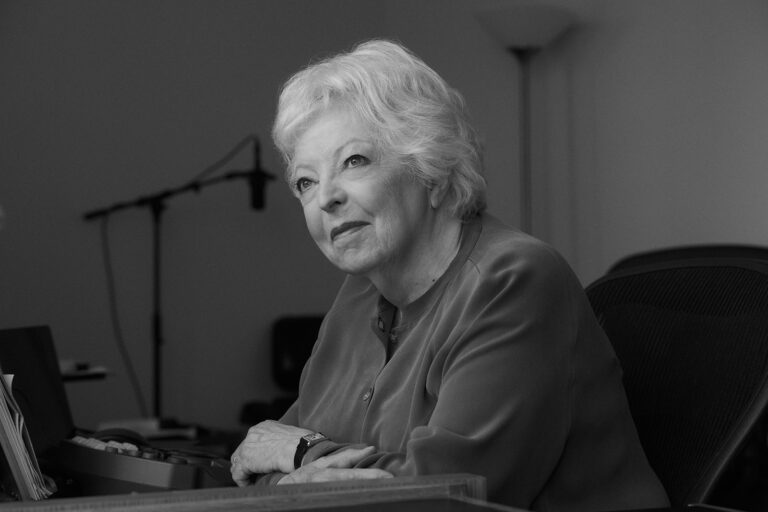
Yorgos Mavropsaridis (Poor Things): I did read it, but only because I was curious. I believe they did a fantastic job in the adaptation. The book is different. It’s about Bella Baxter, but it’s narrated through letters. Also, the characters, especially Dr. Godwin Baxter, are a bit different. Godwin is more willing to be with her. There’s an antagonism between Max McCandles and Godwin Baxter about Bella that does not exist in the film. The character of Godwin Baxter is transformed into a benevolent monster.
Hilda Rasula (American Fiction): I’m just finally at an age, I won’t say which age, where I trust my instincts more and more. My instinct is to use the screenplay as a guiding light. From there, I use every tool at my disposal to edit, especially how I react to the footage. I’m starting to gain more confidence in my mid-career self. I’m trusting my instincts more.
Balancing drama and comedy
American Fiction blended drama with comedy, as did The Holdovers. The relationships at the center of the films are crucial, and finding the balance between the two takes care, collaboration, and exploration.
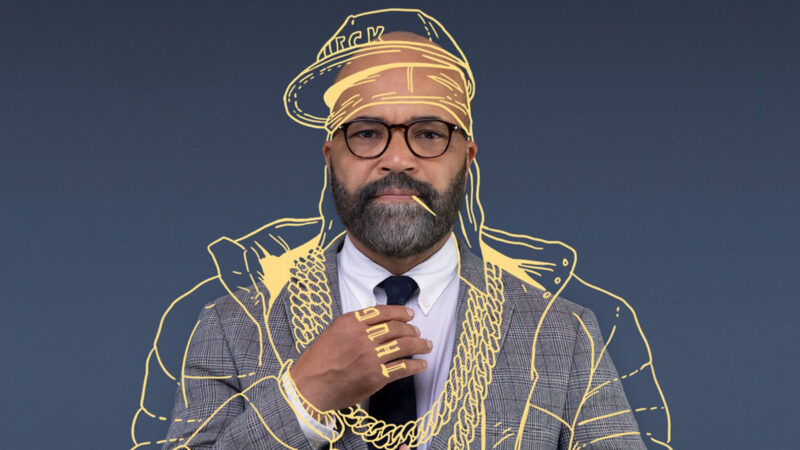
Hilda Rasula (American Fiction): It becomes a family dramedy about Black characters going through incredibly universal things. But it’s not a period piece and it’s not a “larger issues” movie. That is really what this film is trying to do.
There were a zillion times when it felt like it might be leaning too far in one direction or the other. Ultimately, the blood, sweat, and tears of editing this movie were finding the right tone. We did a lot of pacing experiments to find that balance.
For instance, in the comedy scenes, we had a lot of discussions to make sure that it never became pure farce. A lot of absurd things happen, and it’s meant to be funny, but we could have gone bigger and we chose not to. There were a lot of moments where we chose to pull back. We wanted big comedy scenes, but we would pull back just enough so they weren’t outrageous farces that would never happen in the real world.

We also worked hard to lighten the dramatic scenes. When the color palette of some of those scenes was getting into really blue, dark indigo territory, we lightened it up a little bit.
Those little edges of comedy that Cord [director Cord Jefferson] finds in his writing were always there. There would be a dark scene or a sad scene and then something funny would unexpectedly come out of a character’s mouth. That’s Cord. But we had to work to shape and pace those scenes so that they didn’t dip into a valley that was impossible to get out of.
Alexander Payne (The Holdovers): So often in the first reel of a movie, if it’s a comedy and there’s a mixture of the tones, either an early viewer or your financier will say, “Give them permission to laugh.” Do something early in the movie that makes a laugh so people have permission to laugh. That’s fine.

But in this movie, the credit sequence has a pretty melancholy song over it. Maybe we trusted that it was going to be a comedy, but the first reel allows everyone to let it be melancholy as well. It has this wintery montage and moody music. But then we abruptly cut off the music and go inside the apartment, so that kind of says both. It says, “This is melancholy. This is a drama and a comedy, right?” Then Paul Giamatti comes in and you want to laugh immediately because of what he does. [no spoilers!]
I love seeing my films with an audience, especially if they’re working because that’s when the experience of making it is complete. It takes an audience, not one viewer, but an audience to complete a movie, especially if it’s a comedy. I never expected so many laughs during the cherries jubilee scene. That’s what I never saw coming.
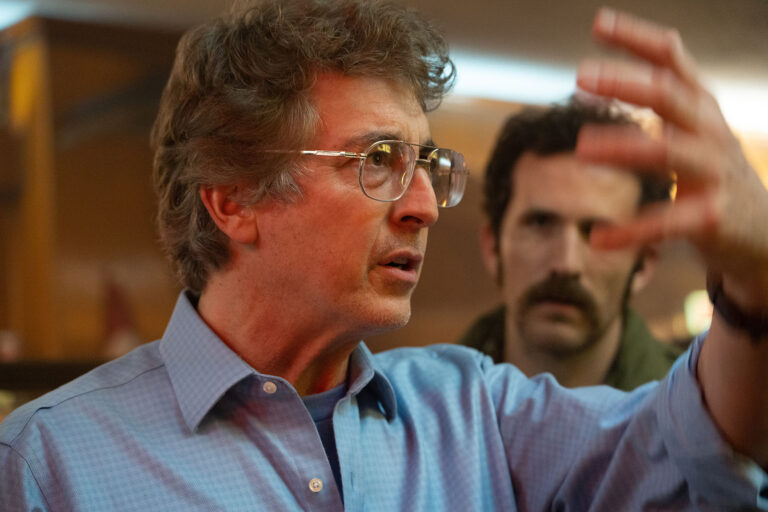
Kevin Tent (The Holdovers): I think that’s because it’s such a warm laugh. They’re so enjoying the film at that point that it’s an expression of how much fun they’re having. It’s not a super funny scene, but there’s something about it that’s moving them.
The power of music
From movies made about musicians (Maestro) to movie scores made by famous musicians (Killers of the Flower Moon), to needle drops, the attention to music in these films is something the filmmakers have spoken about rather extensively.
Michelle Tesoro (Maestro): Most of the cues were already written into the script. There were a handful that were not, but Bradley [Cooper] had them in his mind. He said, “Here are the tracks that I want to use, I just don’t know where they should go yet. But please load them into the bin.” As we assembled and honed the reels, we would naturally find a place for a cue. Usually, it was Bradley driving that. But we didn’t start that until we were comfortable with where the reels were. Once we had the music that was already written into the script placed, we went back and did a whole pass where we tried different musical cues in different places.
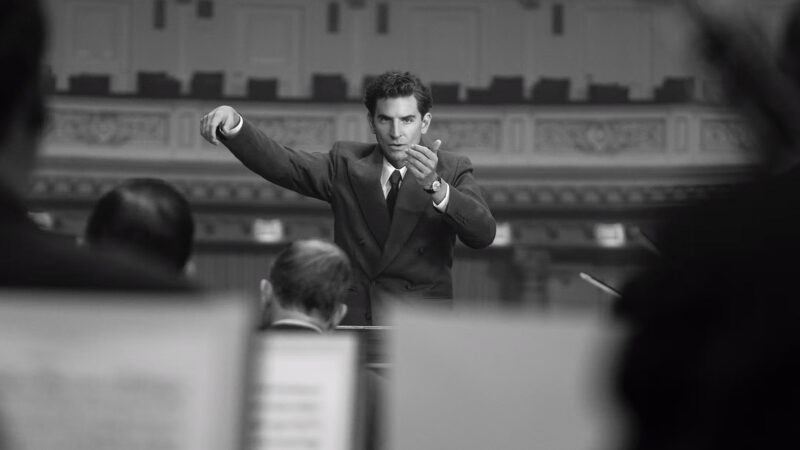
We did not have any stems. We just had the master recordings, and a lot of times that’s fine. In the beginning, when we were working with it, we needed to feel whether the cue was appropriate. We had to figure out if it fit in with the timeline of the story. I think that was key. But the tone was also prominent.
Once we started the mixing process, Bradley decided, “Hey, these are the cues that we’re going to re-record so that we can have stems.” In the beginning, I think we had three sequences that were recorded live. You’ve heard the story of the sixty microphones. But there were only three of those where we had live musicians and we had access to different stems and things like that.

For everything else, we had the two-track masters from actual Bernstein-conducted music. At that point, we said, “We want this cue because it needs to match what we recorded.” When we got on the stage, we discovered there was a huge discrepancy in sound.
One can take a master and sweeten it to try and match it, which we did in the case of the Adagietto of Mahler’s Fifth. We were able to do that there, and it’s wonderful to hear. You can hear Bernstein’s breaths. It’s lovely to have his ghost in there a little bit. But for the other cues, especially if they were part of the score, it was great to have a rerecord and be able to fill the room that way.
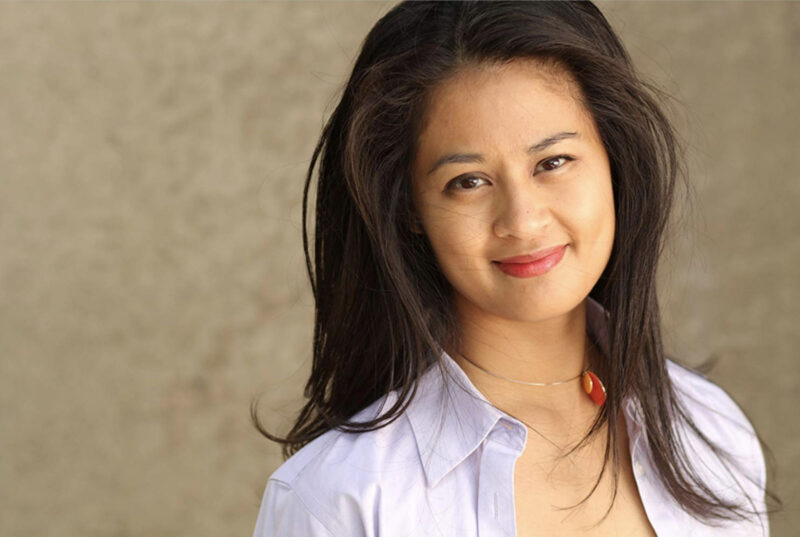
Thelma Schoonmaker (Killers of the Flower Moon): The throbbing bass line was something that both Marty and Robbie [Robertson] came up with. It’s not only the drums that are so important to this culture, as you see in the last shot. The dances that they do are very sacred. You have to be invited to them. They’re not tourist things. The drums are incredibly important, and they consider the drum a person, as they do the pipe.
Robbie being half Mohawk was also important. Marty wanted an Indigenous person to do the music. He felt that this would drive the movie through to the end when we see the drums. It also is probably blood running through your veins. It’s probably got a lot of significance, but the fact that he continuously employed it meant that in his mind he was giving it to Marty as a way to move the film along.
He sent us a great deal of material, and Marty would take it and structure it the way he thought it would work best for the movie. He hit upon the piece that you see in the beginning right away. When you see the oil burst out of the ground you hear that very strong piece of music. Marty said to me, “I think this could be our theme,” and it was.
However, there’s also a lot of actual music from the time. Marty struggled to make sure that the music he put in the film, other than the score by Robbie, was music that would have been heard at the time either on a radio or on a record. The music you hear during the long Steadicam shot inside the house where all of Ernest’s family has invaded Mollie’s house is an example of that. The shot begins with a needle being put down on this wonderful piece of music.
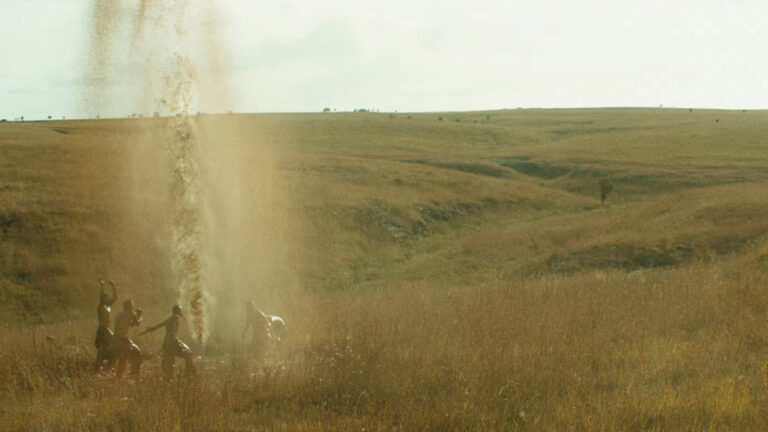
Marty has put a great deal of music other than Robbie’s in the film, which he always does. He works really hard. He listens very carefully. He’s sure to be historically accurate. That work he puts in gives the sound of the movie a very rich blend.
Marty has one of the greatest gifts for putting music to a movie out of anybody, I think. Sometimes on a film like Casino, we would have six or seven pieces of rock and roll that he wanted to use in each scene. We would try each one against the first cut of the scene and usually one popped out. One would just fit perfectly. But it’s his design and he comes up with what to even play.
I am part of putting it to the scenes and seeing if it works. Then I am responsible for seeing that the music is properly handled and mixed. That’s something he’s just a genius at.
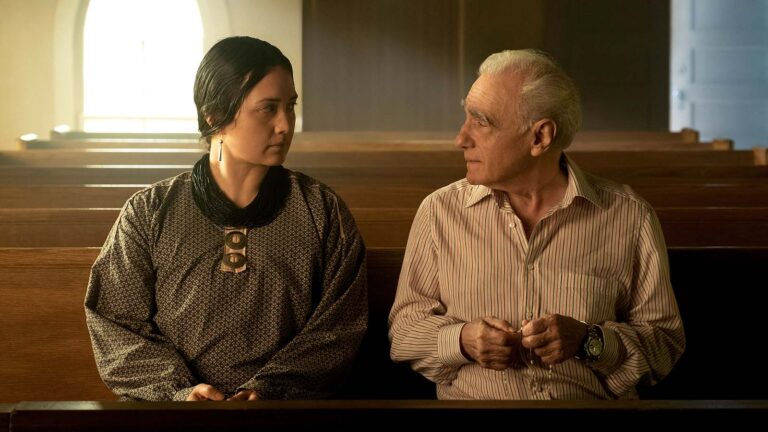
Hilda Rasula (American Fiction): We didn’t hire our composer until later in the game and we didn’t have the budget for a lot of music. There are almost no needle drops in this movie. We were temping with jazz, which is tricky to temp with. So, I needed to take on more responsibilities in terms of almost being a music supervisor and a music editor right from the start.
But I love working with music. That’s also where the creative control freak side of me comes out. It’s so fun to play with music. It’s fun to have that kind of control, even though it’s just a temp score. It’s fun to hear something while you’re driving in your car and think, “Oh my God, what an amazing intro to this song. I love it. I can already picture it playing at the end of that scene.” You get inspired by things. It is fun to have that freedom.
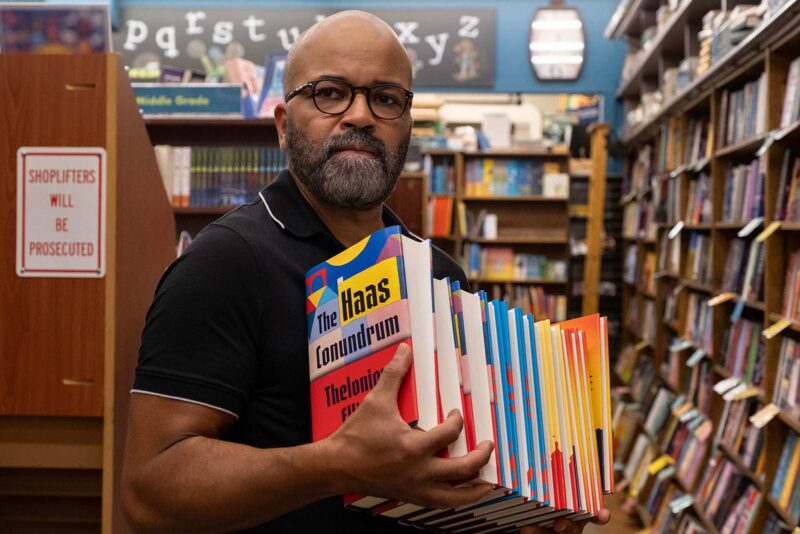
I always first cut the scenes dry. If there’s something that’s incredibly music-dependent, that’s in a particularly rhythmic way, then I will cut with music. I’ll cut a montage with music or something that’s music-driven. Sometimes, I will try to find music first, but generally speaking I cut everything dry knowing that it’s going to need music.
But music plays tricks on you. Music can make you cut things too long. I think that it’s better if you try it dry. Then, when I’m building and assembling something longer, I’ll try to feel the spots where it’s crying out for music. I’ll feel like, “Music must go here. This transition just doesn’t work without it.”
Yorgos Mavropsaridis (Poor Things): In our previous films up to The Favourite we used classical music. We didn’t have a composer. Poor Things was the first time he used music from Jerskin Fendrix. The music was composed eight months before the shooting started. So, the themes were already there.

I don’t use the music at the beginning, though. It distracts you. It takes you to different places. You don’t need that. You need to focus on the performances or the pace without music. After that, music comes. Of course, that’s the time when we deconstruct the film. We break it apart, and music can help us do that. It gives us the pace.
Since we had theme music already, we sometimes added it in to fit a particular situation. Sometimes, the same theme would play twice in the same scene, but it had to be a little different the second time we heard it. So, we would send the scene to Jerskin and say, “This is the situation, can you work on that?”
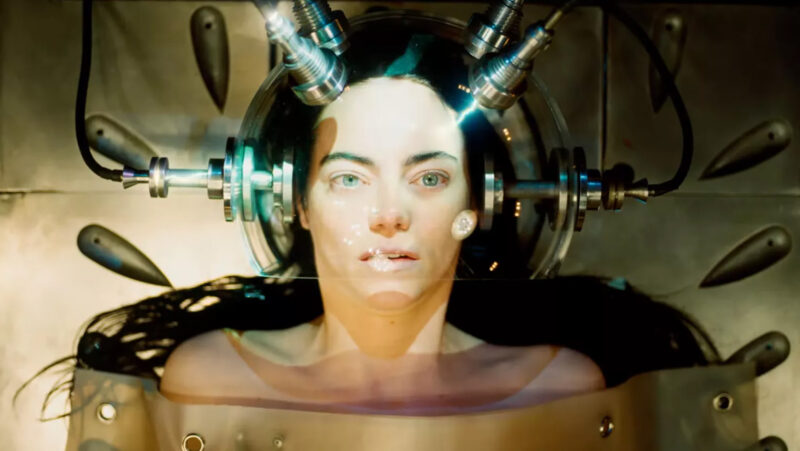
It was a pretty clever way to work because you can edit the music. You can change things, you can punctuate something with the music. You can edit the music just like you can a picture. In the end, it has to be sent back to Jerskin and then he refines it. The idea, though, is there. The themes are there.
Nick Houy (Barbie): What saved us was doing really great temp music that synced with the vibe of the film, and finding that vibe and being really hard on it. Not saying, “Oh, this song will do for now. It’s not right, but it’ll do for now.”
We said, “Let’s make this entire movie sing, 100 percent.” As far as the temp score, I think getting the needle drops as close as possible to the actual tone helped the musicians. When they saw the cut with the temp music, they said “Oh, I get what you’re doing.”
We were constantly working on it and trying different music and making sure it was the very best for each tiny screening we had, or any big screenings, too. We were hard on the material and made it as fun and emotional as possible.
One thing that’s really important to note about [the Ken battle-dance] sequence is that it wasn’t even in the script. They just went and shot that one day and no one knew it was happening.

They were running the choreography and Ryan was getting the song, and Mark Ronson had written the song with Andrew Wyatt, and then it was just “Oh, now we’re going to shoot this dance sequence.”
It was crazy. It wasn’t in the script. It wasn’t on the call sheet or anything. So that’s another insane thing to realize. Greta was able to just do that out of nowhere. She knew she wanted it and she was going to get it, and she did it.
What’s crazy is that it comes off the heels of a scripted scene where Ken is singing Matchbox Twenty, which is already extremely bizarre. I’m still wondering what all those people who bought tickets are making of that.
Kevin Tent (The Holdovers): Usually, we don’t start thinking about music until later on. On this one I started putting music in and Mindy, our associate editor and assistant editor for years, started putting music in. Then, we worked with Richard Ford, who’s a music editor and does a lot with all kinds of music. We brought him in fairly early to start helping us with both score and needle drops.
But needle drops are just where titles fall until you get to the end of the movie. You can’t get too committed to anything because it costs so much money and it’s such a back and forth. “We can get this song, we can’t get that song.” It’s a long process.
When I started working on this movie, I couldn’t hear the music. But Mindy put one of the Christmas songs by The Swingle Singers in. I can’t remember if she gave it to me or if she put it in, but that became something thematic that we used a lot, which was great.
To be (or not to be) on set
Some directors love having an editor on set to help them visualize what they’re shooting as they’re working. Some editors prefer not to be on set so what they’re seeing about the process doesn’t influence what they see in the footage with fresh eyes.
Hilda Rasula (American Fiction): I was in L.A. and they were in Boston. Production ran for four or five weeks, so it was a cool twenty-five days, which was great. But they did squeeze in a lot of locations during that time and a lot of location shooting. I heard it was pretty intense over there in Boston. Just a lot to do every day. A lot of pages to get done. Luckily, I was kept far from the fray. I would just sit in North Hollywood cutting away.
There was a little delay because they were on the East Coast. We were always cutting a further six hours out from the way we would have if they were in Los Angeles. I was always about a half-day behind.
Mike Fay (Oppenheimer): I think I had fifteen different Avids, from the condo in Santa Fe to the office in Albuquerque to the back of our dailies trailer, cutting on an iMac. I’m used to having a home base as an editor, where it’s your little nook where you cut. But on this show I was a nomad. We were nomadic, moving from place to place. Out in the middle of the desert, in the back of an 18-wheeler, which was our dailies trailer, where we screen dailies. I put an iMac in there.
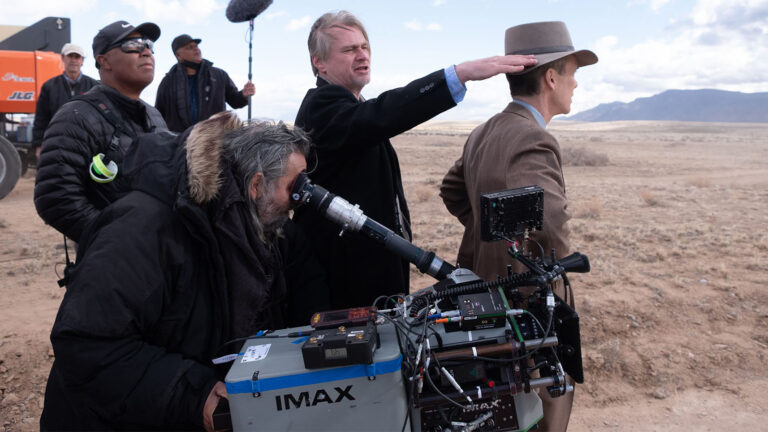
Nick Ellsberg (Oppenheimer): What people don’t realize is that Chris Nolan screens dailies every day on film, on set. That is a huge logistical challenge that’s also really worthwhile. It’s really fantastic. This was the first film ever to interlock Pro Tools to play back uncompressed audio with film projectors.
We did it for dailies and then we ended up using it all throughout the director’s cut. We used the legacy bi-phase port on the SYNC HD hardware and made that sync up to our film projectors. We were able to use that to screen work prints before we had a DTS (Digital Theater Sound) track.
One of the first things we had to do was figure out “Where are we going to set up the cutting rooms, which will also be the film cutting rooms?” We were going to start by having everyone together and then, when we go into production, move everyone to a house that Nolan has to edit. There, we were able to keep the film room separate, because they need a lot of space.
The editing process on Chris’s movies is such an operation and such a machine. He likes to do things the same way every time.
Tom Foligno (Oppenheimer): I worked in the film room, which was actually in another place. It was between where they were cutting the film on the Avid and where the lab was processing the film. We had a big place where we would store all that film. There were a lot of different formats of film. We primarily shot with the IMAX 15 perf and the 5 perf/70mm. VFX also shot some 35mm, which we incorporated into the show as well.
Also, the IMAX 15 perf and the 5 perf/70mm were both black-and-white and color. That was a whole other challenge because shooting black-and-white 70mm had never been done before.
Nick Ellsberg (Oppenheimer): Luckily, we were standing on the shoulders of giants. John Lee and Eric Lewy, our predecessors, had worked out systems to keep it all straight. We inherited some of that, which we ended up adapting and using.
On the film side, it’s readily apparent which format you’re holding. The 5 perf/70mm looks a certain way, for example. We never handled the IMAX 15 perf film. It was always a 35mm reduction. But you can physically hold it and see that it’s a different format.

In the Avid, a master clip is a master clip and takes are takes. We would have things telecined in their native projection aspect. Then we would change it, depending on how we were viewing it, using resize tools in the Avid. Using Avid’s color-coding system, we could clearly label what was an IMAX shot, what was a 35mm shot, what was a 5 perf/70mm shot.
Yorgos Mavropsaridis (Poor Things): I was cutting in Athens. We had a very good team in Budapest and we had the rushes the next day, the black and white and the color. The only negative that came a bit later was the Ektachrome. Bella’s adventures with Weddernburn were shot on Ektachrome, with a huge LED wall behind them.
There was a lot of material. There was a lot of improvisation. I was enjoying what I was doing, but an assembly is an assembly. It’s a way for you to learn the material, to see all of the variations and possibilities that exist.

Yorgos [Lanthimos] and I met up about two weeks after they finished shooting in Europe. We didn’t watch the whole film at once. It was not possible. It was around four hours long, so we took it section by section.
It’s much better to be removed [from the production]. The only time I went with production was when we did The Lobster in Cork, Ireland. And honestly, it was not a good experience.
When you’re on location, you are influenced by the environment. Your opinion and your aesthetics get influenced. Also, when you’re with production, your job becomes, “Hey, the shooting stopped because it rained. Can we make an edit of this scene to see if it’s okay?” It’s not that creative. It took me a while to get back to what I wanted to do. I had to find myself again. I had to rediscover my pace. I shouldn’t be on set.
We just need what we used on Dogtooth. It was a simple thing. We did rent a place for this film. Lanthimos had his own office with a projector and a big screen. But we used to just work on a big plasma TV with an iMac and an assistant. That’s it, nothing more.
Laurent Sénéchal (Anatomy of a Fall): I had this experience with Justine [director Justine Triet] previously on her last two movies. She cannot see an assembly. Simply, she cannot. Not at all. It’s going to be a mess if she doesn’t choose things. She needs to be there at the beginning of the process. It’s a long way to finish the movie, but it’s the best way with her because she cannot not be there. She wants to be there. She’s a bit of a control freak. It’s because that is the main way for her to pay attention to the actors’ performances.
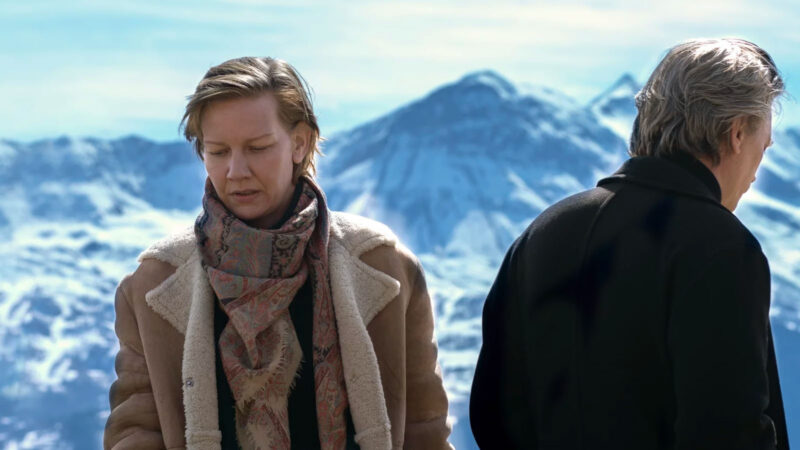
Acting is the main thing for her. She wants to be sure that she’s choosing the best moments, the best takes, but it’s a huge way to work. Only after we choose the good material do we try to arrange and cut it. I’m looking at the dailies and we are talking maybe once a week. But I’m not close to her because I know that she’s another person when she comes into the editing room. She’s wondering if she should press the reset button on everything. She wants to create something else with all the footage.
Single-camera shoots and film workflows
Hilda Rasula (American Fiction): They shot mostly on a single camera. It was an old-school movie in a lot of ways. Unfortunately, we did not have the budget to have two cameras running every single day. There were a couple of occasions where we needed a few cameras. There were a couple of big scenes where we needed three cameras and we brought them in just for that. But it was a lot of single-camera shooting.
Tom Foligno (Oppenheimer): The dailies all had the earmarks of a real classic picture in the way it was shot. I worked for Scorsese a long time ago, when he was shooting on film. He would rarely shoot two cameras. Christopher Nolan never shot two cameras either. It reminded me so much of that. The mindset is “Just get what you can!” It was so great to see somebody still doing this kind of filmmaking.
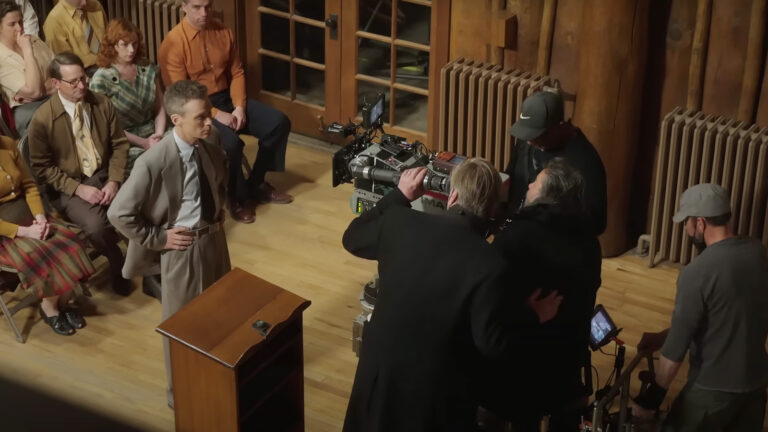
You would get very thoughtful footage. Nolan is very economical. It was never about just throwing stuff against the wall. They knew exactly what they needed and they had great actors who could nail it in the first couple of takes. Working that way means you don’t have to shoot that much. Then, when you’re editing, it’s really great because you don’t have a hundred choices for cuts. It’s just there. “I like this take.” That’s it.
It makes it a lot easier for everybody if you have a director who is a master at making movies. That’s what I think Chris Nolan is. I’ve seen it a few times in my life, but not very often. This is one of them. I’m really happy about it.
Mike Fay (Oppenheimer): Our loads on the IMAX 15 perf had a runtime of about three minutes. As soon as that camera is rolling, they are into the action. They get into the scene as quickly as possible.
It is refreshing to get back to a set of takes that are condensed down to just what’s needed. It’s not “Let’s reset. Go back to one and do it again.” I think we did a reset here and there, but it was very rare.

It was always cutting and then resetting. Takes would not run on forever. Nolan is very thoughtful about what he’s shooting. He gets what he knows he needs. Yes, he’ll get the number of takes that he needs. But in terms of setups, he’s very aware of what he’s getting. He’s not just shooting five cameras to cover it.
Yorgos Mavropsaridis (Poor Things): Lanthimos wanted to shoot on film after the budget got better. He always wanted to shoot on film. The Lobster was low budget, so he couldn’t afford it. Otherwise, he would have shot on film. Even when we started, the first film we worked on together, Kinetta, was 16mm. Dogtooth was shot on film as well, and anamorphic. It was a matter of aesthetics for him to use film all the time.
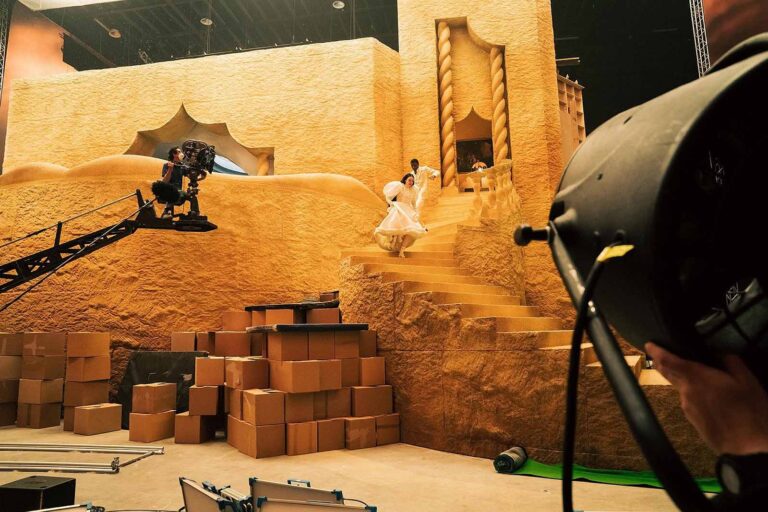
Enjoying the process
Everyone knows that editing a film is a painstaking and laborious process. When the films are nominated for awards, the results are incredibly gratifying. But to be an editor, you have to love the process of working with your director.
Thelma Schoonmaker (Killers of the Flower Moon): Marty wanted to use a simple style and get the viewer to engage with scenes where they’re spending some time with the characters and beginning to feel what they’re like. It was a simpler style than some of the other movies he’s made in the past. This film has a certain build that is important.
That’s what we always do. He tells me what he thinks and I tell him what I think. I make notes from all of that. Then I do the first assembly. He also gives notes to the script supervisor during all of the shooting, which are excellent. I get those notes and use them all the time.
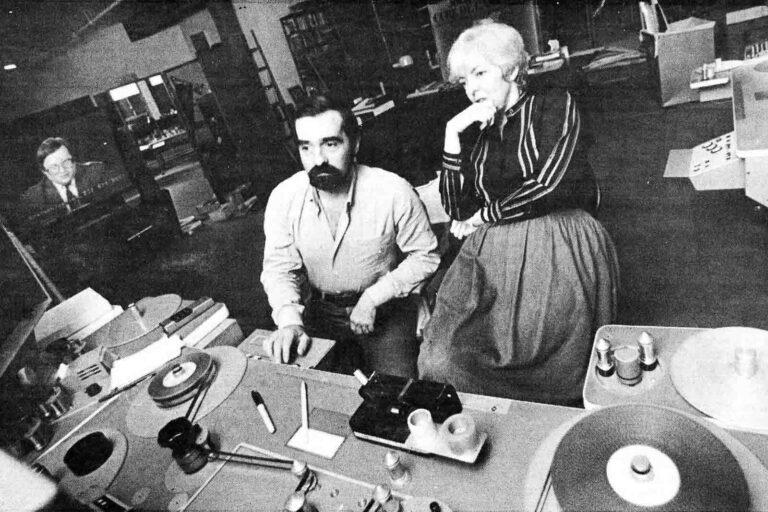
I make the first assembly and then he and I cut everything together. Once we feel we have something that works, we invite a small number of people and ask them afterward what they think and either accept it or not. Sometimes we don’t agree with what they say. Then we recut again and screen again and recut again and screen again. We’re very, very lucky to have that time to develop the movie properly.
There were certain scenes we moved around. It was not a lot. The big change was the love story becoming the central force of the movie. We did whatever we could to make sure that worked. We did occasionally move things around, but you always do in your editing, usually, except for Goodfellas where everything was perfect right from the start. That was because Marty and Nick Pileggi were both so familiar with that world that they were working hand in hand. That movie was like riding a horse. It knew where it wanted to go. That film was just there already. There was a lot of editing, but it was interestingly a perfect structure.
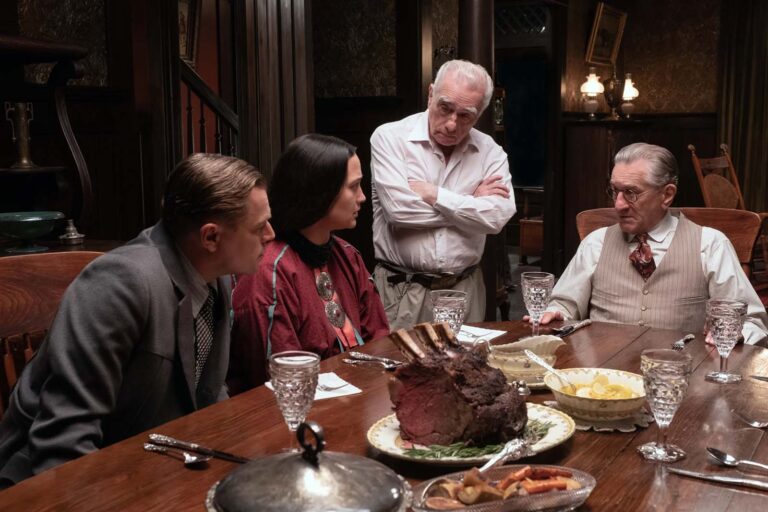
Jennifer Lame (Oppenheimer): Every minute we’re in the room, we’re working. We’re still talking. It’s not unpleasant. In fact, I find it really pleasant, especially as you get older and you have kids and you have a family. It’s nice to know that from the minute I get there to the minute I leave, even if we’re not physically editing, it’s all going towards working.
I really appreciate that because our jobs are hard. They’re long hours. We all have families. It’s not easy. It’s nice when you work with someone that’s respectful of time. Every minute you spend there, even if you have to stay late, you know it’s for a reason. It’s so nice to show up to work every day and feel like you’re going to get a lot done. That’s a good feeling.
[On the Trinity sequence] My background is not in creating action and tension. I’m still learning that. Chris is an amazing teacher because in all of his movies, that’s his thing. He’s so good at it. Chris was never judgmental. We did it together and it was so fun. It was one of the most fun things to cut with Chris because I did not have time to do any of that on my own. He is just a master at building tension like that.
Hilda Rasula (American Fiction): Cord was humble and good about letting me do my thing. Not every first-time director is like that. Cord respected what I needed to do on a nuts-and-bolts level. He wasn’t tied to any particular angle or sequence. He didn’t have any of that in the room. He was all about feeling the story that he wanted to make. He trusted me. He openly and generously trusted me to find what every scene needed, whether that meant tweaking a fussy performance or making the necessary cuts that happen when you don’t have a ton of angles.
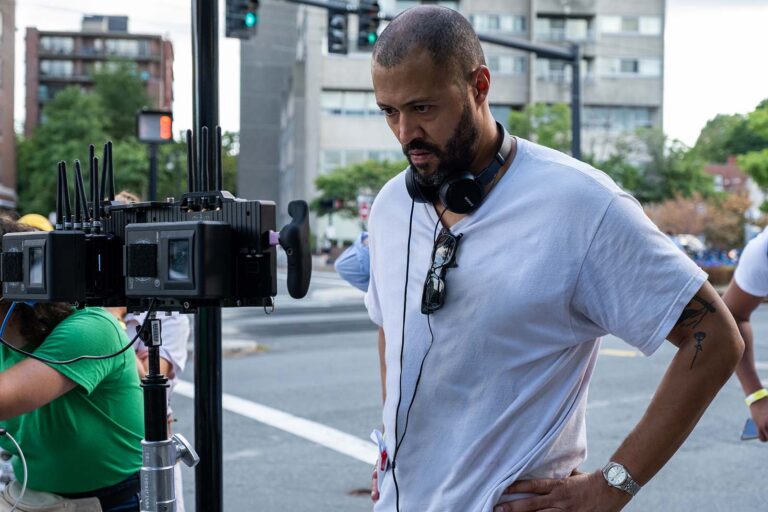
Making the cut—or not
Some fast-paced movies require lots of cutting (think back to last year’s Top Gun: Maverick), while others—especially in the more personal or dramatic films—take the opportunity to linger a little longer on a moment or an action. This year, the films ran the gamut from big blockbuster fun, like Barbie, to the “smaller” films that focus on just a few characters, like The Holdovers.
Nick Houy (Barbie): We were changing the cut drastically every day. It would be really big changes. In and out and back and forth, constantly. The VFX team was always on their toes. It was the most amazing team I’ve ever seen in how they were able to handle that. It was a sight to behold. It was unbelievably time consuming. It’s not like the movie was put together and we were pretty close to lock. It was nothing like that. We were constantly, drastically changing the cut.

We were just trying a ton of stuff. There were days when we had a bunch of big ideas we were trying in every reel. Literally, there would be twenty pretty significant things that we wanted to try before the next screening, which would be in two days.
We would delegate to everyone. The whole team would stop what they were doing and try all these crazy ideas. A lot of them involved temp visual effects and crazy sounds and music because it is such a crazy movie. It was just unbelievable, full-tilt creativity every day.
There’s a beach scene where everyone says “Hi, Barbie.” There’s more than fifty iterations of that scene. And some of them are completely abstract works of art, in my opinion. They were worked on by multiple people with different ideas. They could be in the Tate Modern. They are that bizarre. Or they could be in a 70’s avant-garde screening.
We really went there. We went there with everything. That’s why some of it survived and some of it didn’t. But it was all amazing. I do wish we could screen alternate versions of it for people.
Jennifer Lame (Oppenheimer): When you’re dealing with a three-hour biopic based on a ginormous topic and a ginormous book, pacing is a problem. That was always a problem we were faced with. A lot of people thought earlier drafts of the movie felt too fast, which is hilarious because it was longer than three hours for quite a long time.
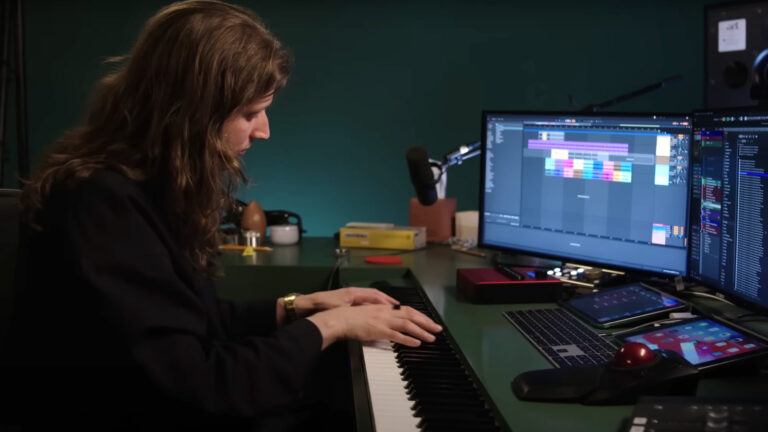
Cutting out twenty-five minutes in this type of movie is not easy. How do you not make people feel rushed, but also make them feel like they’re on this journey? How can they connect with the character when your pacing is quite hurried, in a way?
Not hurried, but the movie is fast-paced. You don’t want people to feel like they can’t sit in a scene and feel like they’re connecting to everything. There’s also a lot of tricky information. There’s McCarthyism, the atomic bomb versus the hydrogen bomb, fission versus fusion, and Robert Downey Jr, the Senate aide, getting on a cabinet of a presidency. It’s a lot. It’s not easy information to digest. It was very challenging.
Yorgos Mavropsaridis (Poor Things): [Lanthimos] tried a lot of new ideas in this film, apart from his usual ones, the fisheye and all that. He did a lot of zoom-outs and lateral tracking shots, and that gave us a lot of coverage. His découpage is very clever. It gives you many ideas. But of course, we try to be simple. We try not to do a lot of cutting when it’s not needed. We only do it when it’s needed. Long shots are sometimes followed by montages. There’s a game played between when to edit and when not to. We try not to do a lot of cutting when it’s not needed. We only do it when it’s needed.
We have all kinds of stages we have to go through in the edit. We know that at some point we have to take out things, but it’s a way for us to discover the inner core of the film. In the end, we just keep the parts that tell the stories simply, without making the audience lag behind us. We like to be with the audience. We like them to understand all the things that are happening.
Specifically, we want the audience to enjoy the present moment. Film is an art of the present. We have to make sure that the audience enjoys and understands what is happening.
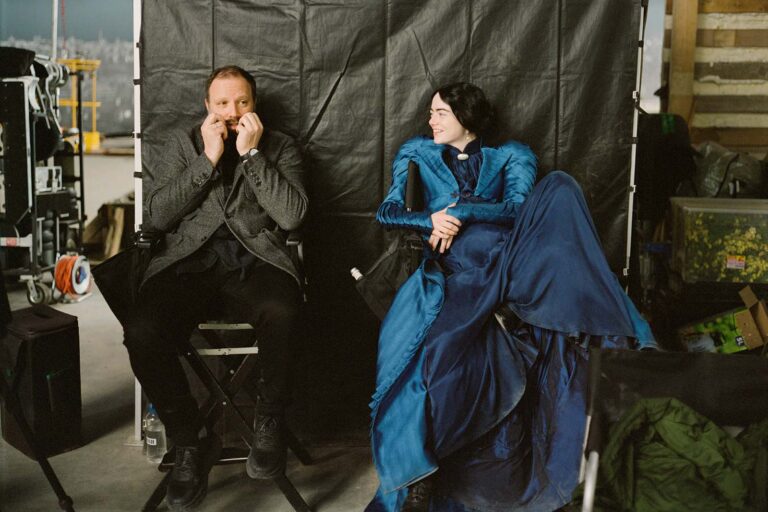
Laurent Sénéchal (Anatomy of a Fall): We had to rebuild a lot of the scenes in terms of the way the boy was existing. We also had to cut a lot of dialogue and let the climate of all of this work. Of course, as an editor, I am also always trying to find a better beginning for a movie.
But Justine told me something that we kept in mind for the entire process. She said, “Even if it’s my last movie, I don’t want to be in a rush. I want to breathe. I want some scenes to be long and carnal. I want the audience to stay there. I’m confident that some of them are going to be with us, so let’s do what we want.”
She didn’t want to be stressed by going fast at the beginning. What she was stressed about was the acting performances. That was intense for her. For example, we spent three days choosing only the good material for the scene when the boy is in front of the judge. There were many options, and we did many versions. That was a way for her not to be in a rush. What was hard was having to go back to the house. When we were in the courtroom, even if the scenes were a bit long, we knew that it was part of the contract between the audience and us. We knew that we were going to have long scenes and that they were going to be harsh sometimes.
Michelle Tesoro (Maestro): I like the idea of every edit being invisible. I don’t want an audience member to be thinking about the editing. But I suppose by not editing you are also making a dramatic point about the editing. The idea of this film was more about finding the rhythm of the entire film, not just the rhythm created in one scene. It’s about how editing creates a rhythm throughout the whole film.
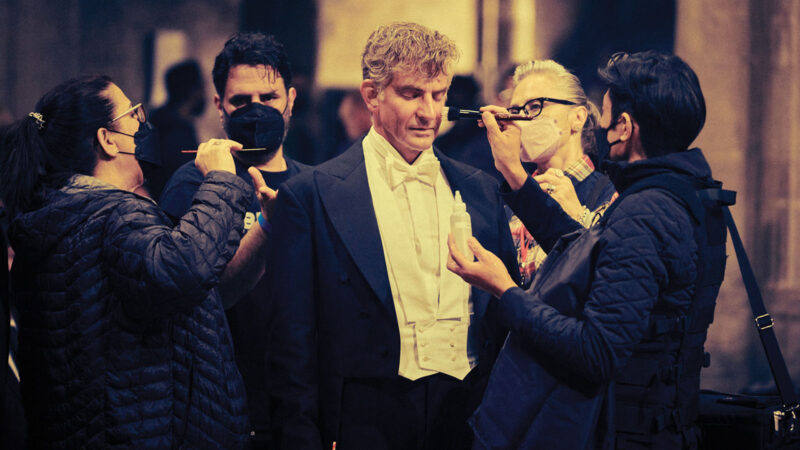
Kevin Tent (The Holdovers): Alexander gets amazing performances from actors and I think that’s because he lets them take their time and find the lines properly. We try not to cut too much. We try not to make things too cutty. It is a challenge to keep things moving and to pick up the pace while keeping the performances solid.
The VFX factor
If you remember all the way back to last year, Top Gun: Maverick was all about the large number of practical VFX vs. CG. In a similar vein, this year the press reported that Barbie didn’t have any visual effects, but that got straightened out pretty quickly by the VFX supervisor himself. Oh, and no dogs were harmed in Anatomy of a Fall, because the vomit was, in fact, a visual effect.
Nick Houy (Barbie): It started with Sarah Greenwood. All of the production design was unbelievable. She built the weird Barbie house and a miniature of it and the entire cul-de-sac with Skipper’s tree house and everything. You could move through the space completely without any bluescreen, which is unbelievable in 360-degrees, the way Rodrigo Prieto, ASC, AMC shot it. I don’t remember how many suns he had hanging, but it just felt like you were in Barbieland. It was beautiful. It was the most amazing set ever.
On top of that, we had Sarah designing pieces with Glenn Pratt, our amazing VFX supervisor, that we would put into certain backgrounds. Most of those were hand-painted and then composited in. The movie has a very tactile feel throughout. The look was a slow evolution. We had a lot of those 1950’s pink Barbie Dream Houses, and then we started to put in different 80’s A-frame houses. That was a really fun evolution that we did with Noah Baumbach and Greta Gerwig.
With a lot of the backgrounds, you wouldn’t know what was bluescreen or not. Sometimes it was just a little corner that needed work. Having so much shot on a stage helped a lot. There were probably about 1,500 VFX shots.
The tricky thing about this is that we needed to get a version of the movie prepped for a director’s cut. We had to basically turn over everything for a post visualization version so that the executives and other people involved could see it without blue screen in it. Then we had to redo all the work again. It was basically turning over 1,500 shots and all the materials. Then we’d get a temp version of the VFX shots in. Some of the temps we did in house, but some we couldn’t.

Then we had to redo all of that again as the cut was being fine-tuned. Tracking and managing that with all our vendors was quite an undertaking. It was the most I’ve ever had to deal with. That’s why we had multiple people on our team and everyone had one key thing they were doing. At the end of the day, we made it. But there were still some shots flying in at the last minute, as is always the case.
Matt Garner (Barbie): It was the first show that we cut in 4K. There were twelve or so editing systems and everyone had their own space, their own room with their system.
We were a little nervous about cutting in 4K. None of us had done it before, and not many shows that we talked to had done it. Company 3 seemed positive that it would work well.
We were on the newer ‘cheesegrater’ Mac Pros and a fairly new operating system for Avid, all of which we hadn’t really experienced before. But I have to say it ran really smoothly. We only had a few minor hiccups here or there. As far as the VFX tracking and workflow, that was constantly evolving with the amount of elements and tracks. Luckily, Nick was open to pretty much anything we could throw his way as far as to what would help us out.
Yorgos Mavropsaridis (Poor Things): We edited for about six months. During that time, some of the VFX had to be sent and tried out. The different animal combinations took a little bit of time to work out. We worked on a big screen. It was only me and Yorgos. We finished about a month before the Venice Film Festival.
Mainly, it was the animals. They were shot in real time. They were not CGI. For example, there is a shot where Bella chases after Godwin Baxter and we see them go past a guy walking with an animal that is both a dog and a duck fused together. That was a fusion of different shots where the guy walks past with a dog and again with a duck.
There’s another shot where Max is lying down and there’s a chicken/pig on top of him. There were many possible combinations for that one. There was a cat, there was a duck. But we had to find which combination of shots matched the best. Then, we would send both shots to Union VFX in London to stitch the animals together.
The challenge was to find the right combination of animals. There were a lot of different options. We had all kinds of animals around. We had to find the funniest ones or the most irreverent, and we had to make sure they could be stitched together properly.
The Ektachrome scenes didn’t need much work. The LED screen background was already there. We just had to watch if the sea waves had to move. The ships were big two-meter-long models, so we had to place them and they had to create all the backgrounds. We fixed all the skies. We were in a studio, so we had to put in all the skies. There were a lot of arrays that had to be taken out.

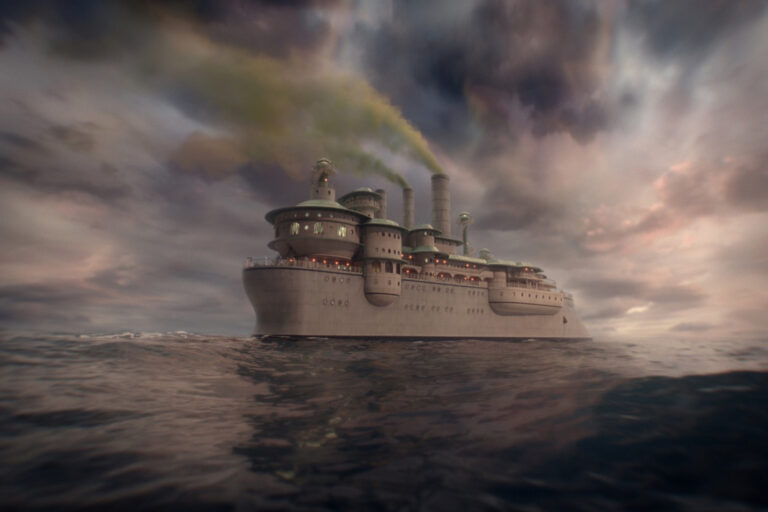
The biggest challenges
Unlike Thelma Schoonmaker’s experience with Goodfellas just cutting together like butter, most films present some kind of significant challenge. But it’s also overcoming the challenges that leads to the best outcomes and the greatest sense of accomplishment for the filmmakers.
Yorgos Mavropsaridis (Poor Things): I think my biggest challenge was keeping Bella Baxter’s spirit of pureness and enjoyment alive. For example, she has scenes that are a bit more explicit. We had to find a way to be truthful to what we saw without being puritanical about it. We were trying to make the audience feel the simplicity of being naked or enjoying what life brings you, even if it’s a sexual thing or a bad thing or it makes you cry. That was the biggest challenge, to make the viewer feel exactly as Bella Baxter does.
Laurent Sénéchal (Anatomy of a Fall): [The most challenging scene for him] It was the argument, and the twenty-minute scene in the trial, where they are talking about literature. The prosecutor is reading Sandra’s previous novel and they are saying, “Is Stephen King guilty because he writes novels about killers all this time?”
For me, it’s like talking about movies. We’re talking about more than this story, this couple, and this affair. It’s like talking about today. What is today? Today, if you write something on social media, you can be on a trial for it ten years later. It was a funny moment in a very long scene. And it’s one of the hardest scenes I’ve ever had to edit because it’s so long. I had to be precise and even confident that it was going to work like that. I’m proud to have done it.
Nick Houy (Barbie): We were constantly sending the marketing team material and they were showing us things just to say, “Can we put this out in the world?” Their work was always amazing. Every week, it felt like there was some amazing visual or teaser that they were sending us, and we were just cracking up and loving it.
We would send them new cuts and then they would use them in the teaser and send it back to us. We thought “Whoa, this is real-time marketing.”
It was just such a great team. It was astounding to work with such a good marketing team. Usually you’re saying “My God, look at this poster. It’s terrible!” or “Look at this trailer, it’s terrible!” That’s usually the vibe when you’re working on a movie. But this team got it. They knew exactly how to get this movie out in the world, which was really exciting.
A lot of musicians were involved in songwriting, so we were constantly showing pieces to them. Chevrolet was involved, too. There were a million marketing tie-ins, so we were constantly sending stuff to the marketing team.
Jennifer Lame (Oppenheimer): I had such a short time frame instead of the whole shoot. I only had around three or four weeks. It taught me that, even though it was difficult and I was convinced it was going to be terrible, it was actually great. That’s not a new lesson when you work on movies. Every time you think something is going to be terrible, it’s usually not terrible.

Chris is so efficient. He is obsessed with time. That’s what I love about working with him. Dates never move. We hit our dates. We have certain weeks for everything. He is so efficient on every level of the process, not just with shooting the movie. It goes all the way to finishing the movie. It’s so incredibly refreshing to work with the director who does not move dates. We do not move previews. We do not move picture lock. We do not move sound mixing.
Oppenheimer taught me that I could be really efficient with my time, which is something I struggle with sometimes. I was able to lock in and get it done in those four weeks. I was proud of myself for doing that because I was incredibly nervous coming on late.
The takeaways
There are perhaps too many to summarize. Filmmaking is at once difficult and joyous. Working with directors can be both arduous and astonishing. And every film is different.
But what we can say is that those who work on films of this caliber are nothing short of inspiring. And we hope you feel inspired by their stories and experiences.

